Masters of the Air: How the Apple TV+ series crafted some of the year’s best visuals
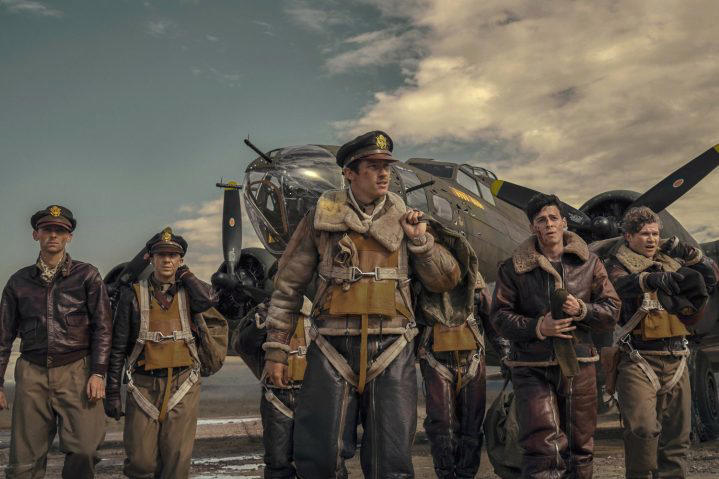
Apple TV++
Twenty-three years ago, Steven Spielberg and Tom Hanks created Band of Brothers, the groundbreaking war series that followed East Company on the Western Front of World War II. Nine years later, The Pacific depicted the WWII exploits of several Marines in the Pacific Theater. In 2024, the action heads to the sky in Masters of the Air, the Apple TV+ limited series about the brave soldiers in the 100th Bomb Group during World War II.
Masters of the Air is visually stunning, backed by sensational production design and thrilling battle sequences. During the virtual production, Masters of the Air utilized cutting-edge technology and thousands of visual effects shots to film the immersive aerial sequences. Two talented craftsmen who worked on Masters of the Air were VFX supervisor Xavier Bernasconi and virtual production executive Steve Jelley.
In an interview with Digital Trends, Bernasconi and Jelley discussed the responsibility of telling an accurate story, explained the challenges faced during virtual production, and pondered if the show could have been made without this technology.
Note: This interview has been edited for length and clarity.
Digital Trends: When you first got the assignment to work on Masters of the Air, I assume it was very exciting. It’s Spielberg and Hanks. It’s a companion piece to Band of Brothers and The Pacific. On the other hand, there’s probably a little dread. You’re like, “This might be the biggest project I’ve ever worked on. I’m about to do thousands of [VFX] shots.” Walk me through the gamut of emotions you must’ve felt when you started working on the project.
Xavier Bernasconi: It’s interesting because you feel the responsibility of telling a very important story. I’ve worked on every [type of] movie out there, right? Marvel, Venom, Happy Feet — they all have their challenges. They’re all great, but when you tell a real story, there is always a component of responsibility towards the person that you’re portraying. In this case, there was the additional fact that some of my family lost people in the Second World War, not necessarily on planes, but on the Russian front. You feel invested in a different way.
The additional challenge, or the additional responsibility, is with a very demanding audience. I feel that historians and history buffs are some of the most well-prepared audiences out there. They will call you out if you’re not doing the right things. The attention to detail that Stephen [Rosenbaum], our VFX supervisor, demanded was extremely high for these reasons. There was a lot of a lot of responsibility. A lot of excitement, but definitely a little bit of oppression. [laughs] Let’s call it like that.
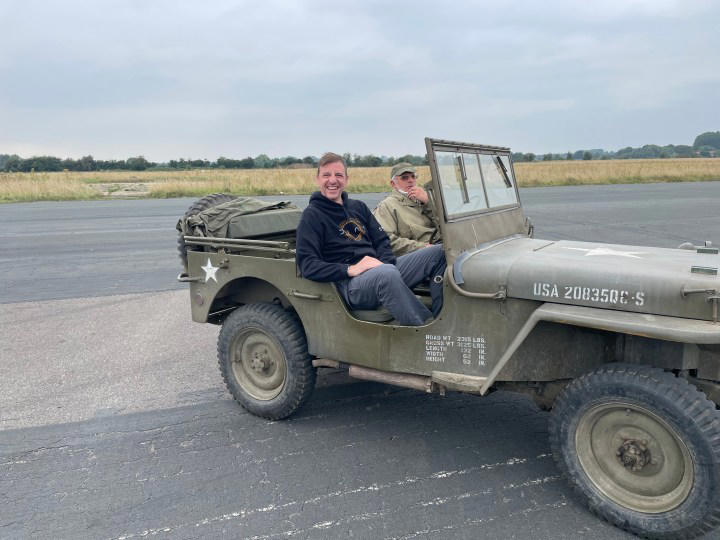
Apple TV++
Steve Jelley: I’m a Brit; I went to college around Oxfordshire. I’m steeped in the history of this at this time period. It was only when Stephen Rosenbaum told me to go and watch The Cold Blue — the only documentary footage shot in the B-17s, like nine minutes in total shot by a pioneering documentary photographer during the war — that I realized what a challenge we had to try and set 90 minutes of aerial combat in the air with very little reference to describe what it was like for the pilots. They were up there in formations with 250 planes, at various points freezing for 10 hours until they got into the hardest possible aerial battle that you could imagine. And then somehow, limp back home.
It was realizing that that was the storytelling challenge. The entire basis was around the interior lives of the characters that we inhabit throughout the show. That was a monumental storytelling challenge in terms of how to make the aerial landscapes make sense, how to get the various positions with the team that exists on a B-17, and how they would communicate. To make that alive for audiences was the reason why we went into this whole end-to-end virtual production process, from previs (the process of visualizing a scene before creating it) to the virtual art department to LED walls, motion bases, realistic planes … the special effects that were achievable, and then the visual effects process.
We not only have to be completely accurate to the history of this well-documented event but also have to demonstrate something that really no one’s seen to Stephen [Rosenbaum], the director, and of course, producers like Tom Hanks and Spielberg, who probably know more about World War II than just about anyone on the planet. That’s the weight of the responsibility of taking on this project.
Masters of the Air had to be accurate and it also had to look great, too. That sounds obvious, but it’s a lot harder said than done. Did either of you find times when you would have to sacrifice looks for accuracy? A shot could look amazing, but it may not be accurate [to the times]. I’m assuming you put more stress on accuracy.
Bernasconi: Yeah. We did the previsualization ahead of time for the entire flying sequences. The Third Floor did that together with Dimension. For everyone on set, it was such a great process because we were all at the same time, on set, working on the previs that then would go into the content for the production stage. Then on the stage, I think that everything was very much accurate, in terms of realism, from the get-go, from the speed of the planes to the cinematography, and not having any acrobatic camera movements.
The lenses were always locked on the plane if they were outside of the fuselage. If they were inside of the fuselage, then it was a handheld, like The Cold Blue. That restricted, in a way, the potential for unrealistic moments because they were all grounded in how you would shoot it in real life. I think that’s what helped a lot, keeping everything very realistic. You had to find a storytelling device to make it engaging and exciting while being physically accurate, and that’s what the cinematographer, the directors, and Gary [Goetzman, one of the producers] came up with.
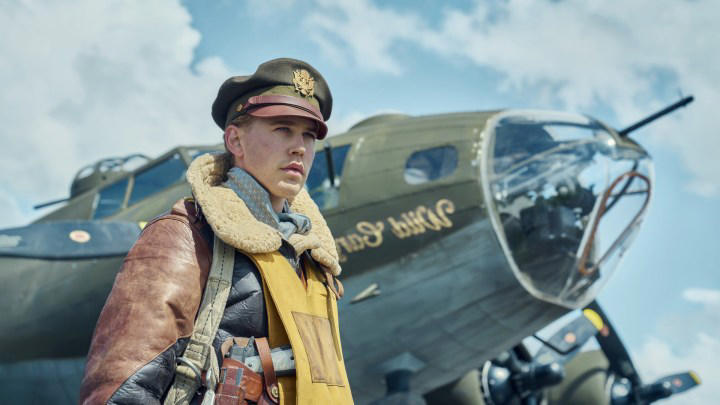
Apple TV++
Jelley: [We had] attention to detail from every department, including production design. There are so many different types of B-17s that were in use at the time, all of which we had a digital twin of in the visual effects process that we built. All of the episodes are missions, but there are logbooks from the war that we initially looked at when we were first trying to visualize the missions themselves in terms of what kind of content we could create on the wall, what the distance from the plane to the ground and altitude and things like that.
There were all of the entries in the actual mission books, so we would simulate what that looked like. We’d place a virtual camera above 10,000 feet and see what it would have looked like. I think when you layer up all the research like that, then you don’t get yourself into trouble later. Of course, many things changed later on in the editorial and the visual effects choices in terms of the storytelling, but I think at no point were where we going, “Damn. I wish that would have been more realistic. I wish that would have been more accurate.” [laughs]
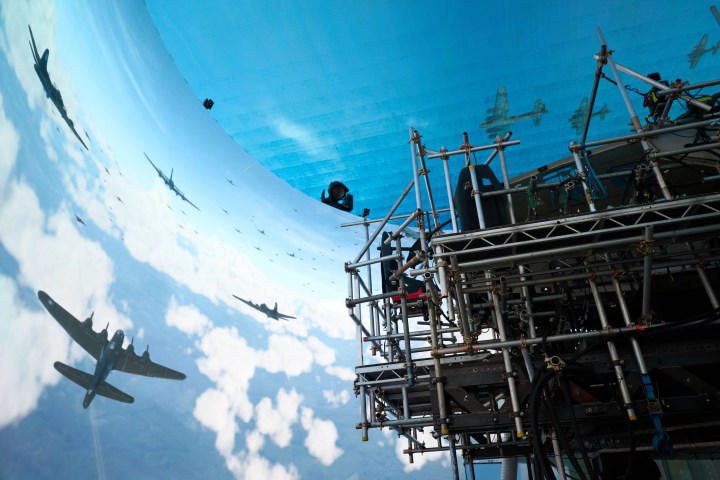
Apple TV++
All the scenes in the air are truly magnificent to watch. In doing some research, I read how you would shoot the actors on this gimbal, and they could see the planes passing by on the LED walls. You could get genuine reactions [from the actors]. Was that always going to be the plan? How did the process with the LED walls come to be?
Jelley: Yeah. That was always the plan. We knew that we were largely using the Volume to create interactive lighting on the actors with their sightlines for what was going on with the action. But also, it was in real-time, which enabled us to do things. With [director] Cary Fukunaga, for example, when he wanted a flak burst to appear, at which point the motion base would shake and the flak would go up on the wall. Those were synchronized, so then the actor would truly be able to react to something unexpected.
It’s the essence of why we wanted to use a virtual production. We had really practical reasons to do it. The light just looks better. We wanted to get that feeling of coldness, even though it’s pretty hot at times in one of those flight suits. [laughs] Again, Cary wanted a naturalistic performance, which meant we had to deliver all of that in basically this enormous simulator, to a degree, which then became what our actors could react to. It was more for them to go on than your standard blue screen.
When did you realize you needed to take the windows off the planes during the virtual production? Reading about how much work was needed to recreate those windows in the post-production seemed like a laborious process.
Bernasconi [laughs] Well, sometimes it’s easier to add than to remove, right? Of course, there was the practicality of having multiple cameras mounted on the cockpit because the directors wanted to have the freedom of being able to choose certain angles to tell their story. For sake of time, instead of having one camera, you would have three around the cockpit. They [directors] could then just have their pick. At that point, it was just better to remove the windows and roto out every window.
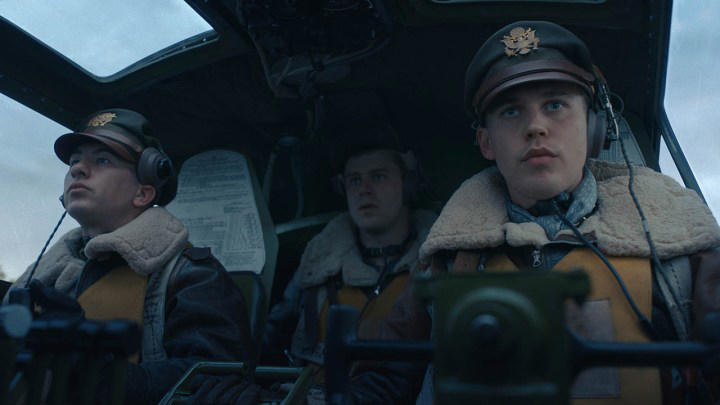
Apple TV++
Of course, we would not have the reflection of the actors in the windows themselves, so we had to body-track every performance in 3D to then recreate the reflections of the actors in the windows. For example, if you didn’t have the co-pilot in the frame, that didn’t mean that his reflection would not be in the shot. We would still have to do it and animate it, so it would match the preceding action and following action of his performance. There are a lot of “not visible” visual effects that contribute to making things realistic.
Do you know something that is very difficult? I always say one of the most complex comp shots is car comps. We are used to being in a car all the time, and we can spot something that is not good or not correct right away. Right? We are used to that.
Jelley: [while turning the camera to reveal a car on the set]* I’m literally doing car comps today. [laughs]
*Steve Jelley conducted this interview while on set for another project.
Masters of the Air — Front Lines: The Production | Apple TV+
Bernasconi: [laughs] There you go.
That’s perfect.
Bernasconi: And people are used to being in a plane. They know when you look outside what it looks like, and instinctively, they will react like, “Oh, that doesn’t look correct. Oh, that’s something off.” Of course, it was a little more complex because it’s something that we are used to. We might imagine it in a different way than what is in reality. It’s interesting. We should never do it, but I did go into the rabbit hole [of internet reactions to the show] and people were like, “Those planes were going too fast,” and I’m like, “Um, they were going the right speed.” [laughs]
So much technology went into this show. Some version of this show could have existed 10 years ago. But there’s no way this version could have existed, right?
Bernasconi: To be honest with you, I keep thinking about it. Could we have done it in a different way? Could we have shot it in a different way? If it was 30-40 years ago, there were more B-17s available. But then you start to think about the practicalities of it. We literally had around 300 to 400 planes (B-17s) in some shots, flying 25 meters from each other. At a certain point, I think we had 300 or 400 German fighters attacking. How can you do that? You can’t. It’s just impossible.
I totally understand the desire to go practical as much as possible, and I think that we did use practical as much as possible in this [Masters]. We fantastically recreated B-17 cockpits with an incredible motion base. Imagine this. There was one motion base that held the entire fuselage, not just the cockpit time fuselage. That’s insane.
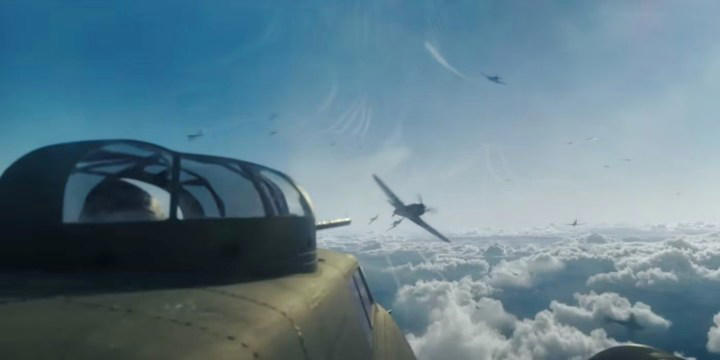
Apple TV++
That’s unreal.
Bernasconi: Then, the entire fuselage had these pins for all these explosion charges. Each one would simulate the flak going off and the breeze coming off. We did our best to go to the maximum available practical approach.
Jelley: Being able to utilize motion bases, which really highlights the beautiful artistry of the model makers who faithfully recreated some of the planes seen in the show, all of this so faithfully, complemented the virtual production side of it. The use of virtual production actually allowed us to do more of that practically than it would have done 10 years ago, where we would have been forced to do a lot of this stuff in CG. We would have to use a lot more green screen, and we would have had to infill a lot more of the background.
I think there’s a lot of technology here, but it’s all very practical technology. Crucially, it also allowed for a very large team shooting in three different locations to integrate together pretty seamlessly. Right from the start, we had an idea of what skies would like like and what practical photography shots we would use.
Everything was massive throughout the entire process. There’s a grounding in reality and practical photography to a show like this that only today’s tools allow you to replicate. I think that’s what’s interesting. The longer I spend in virtual production, the more I think I’m going back in time to making movies in the 1940s when all of the different skill sets were on the soundstage. The difference is now we can achieve a realism that we couldn’t have done back then.
Bernasconi: And to be honest, the size of the production was a bit daunting. Stephen [Rosenbaum] supervised almost like 4,000 shots. It’s incredible. It’s huge. I always say it’s like Stephen almost did four movies at the same time. [laughs] He was a powerhouse in that sense, working incredibly hard … It was such a huge undertaking. When are people like, “Oh, it’s huge.” But if you think about it, it’s almost like four Top Guns.
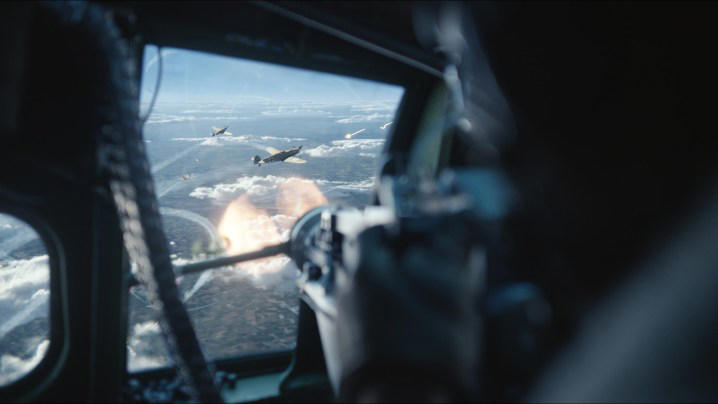
Apple TV++
Nine hours of it.
Bernasconi: [laughs] Nine hours of it. A lot of work went into that.
Jelley: And Masters of the Air was shot during the COVID pandemic, too! I think all of us were grateful for the opportunity to be out working in an environment like that. It made such a difference. There was a sense of a collective mission on the show, which really helped the fact that we were doing a World War II drama. [laughs]
The two realities mingled together to a point where I think we all started living the experience. That was true off the set. That was true on set. That was true when you went to one of the big physical production locations on the airbase. You’d arrive in a truck, and it would feel like 60 years ago. I hope that shows in the end result.
You can stream all episodes of Masters of the Air on Apple TV+.
The Latest Tech News, Delivered to Your Inbox
